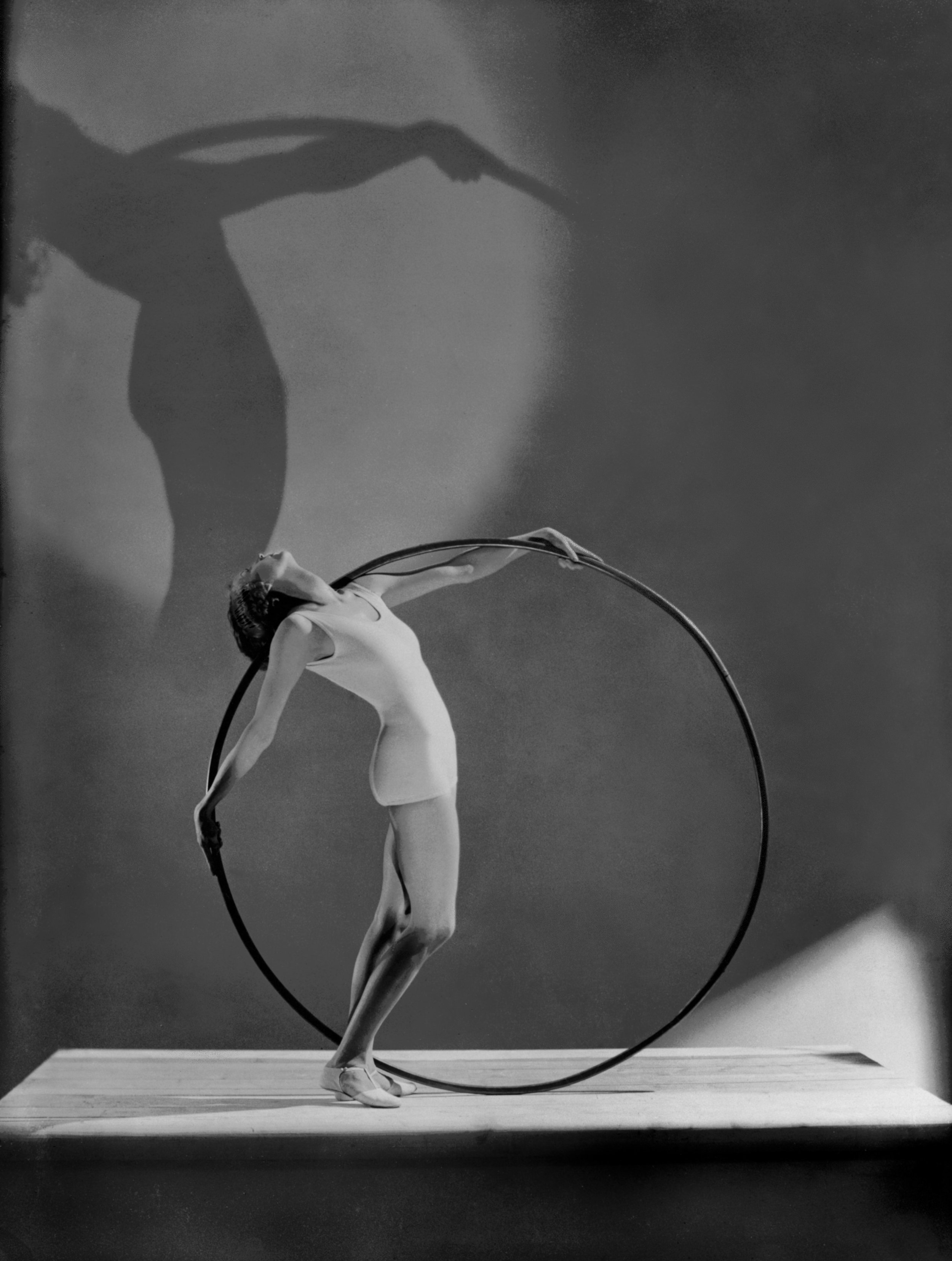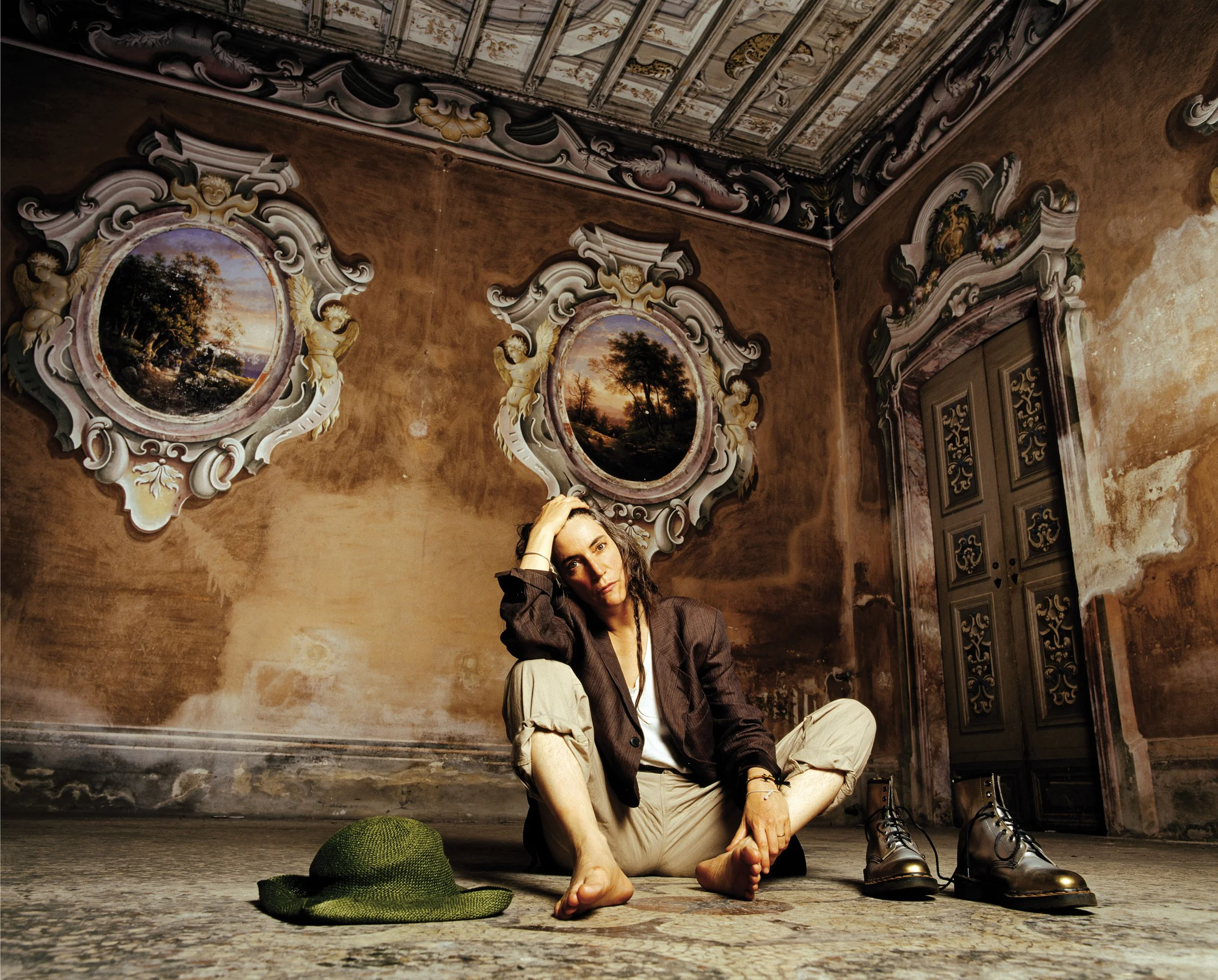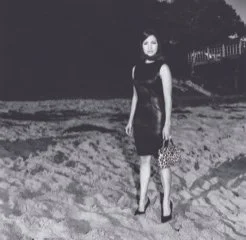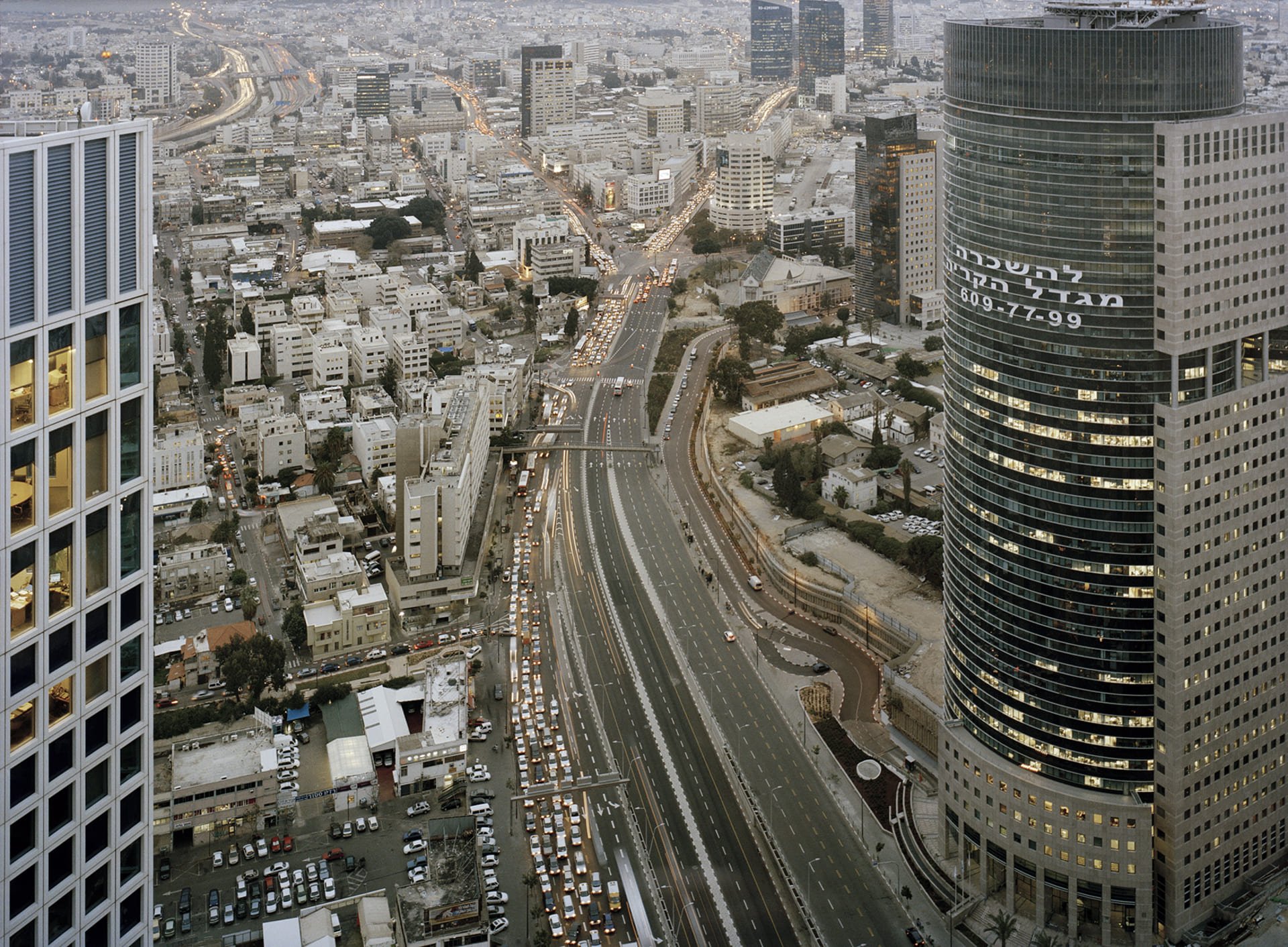
Dorothea Lange | Museo Diocesano Carlo Maria Martini | Milano
Museo Diocesano Carlo Maria Martini | Milano
15. Mai - 19. Oktober 2025
Dorothea Lange
Dorothea Lange, Ein großes Schild mit der Aufschrift „Ich bin Amerikaner“ hängt am 8. Dezember, dem Tag nach Pearl Harbor, im Schaufenster eines Geschäfts zwischen der [401-403 Eighth] und Franklin Street. Das Geschäft wurde aufgrund der Anordnung zur Evakuierung von Personen japanischer Herkunft aus bestimmten Gebieten an der Westküste geschlossen. Der Besitzer, ein Absolvent der University of California, wird zusammen mit Hunderten von Vertriebenen für die Dauer des Krieges in den WRA-Zentren untergebracht – Oakland, Kalifornien. 1942 – The New York Public Library | Library of Congress Prints and Photographs Division Washington
Das Diözesanmuseum Carlo Maria Martini in Mailand präsentiert in Zusammenarbeit mit CAMERA – Centro Italiano per la Fotografia in Turin die Ausstellung Dorothea Lange, kuratiert von Walter Guadagnini und Monica Poggi, die mit rund hundert Aufnahmen die amerikanische Fotografin 135 Jahre nach ihrer Geburt würdigt.
Eine Reise, die in den 1930er und 1940er Jahren beginnt, als Lange Zeugin einiger epochaler Ereignisse wird, die die wirtschaftliche und soziale Struktur der Vereinigten Staaten verändern sollten, allen voran der Zusammenbruch der Wall Street, und die sie dazu veranlassen, ihren Beruf als Porträtistin aufzugeben, um das Zeitgeschehen zu dokumentieren.
Dazu gehört auch die Reise, die sie 1935 mit dem Ökonomen Paul S. Taylor unternahm, den sie einige Jahre später heiratete, um über die dramatischen Lebensbedingungen der Landarbeiter in den zentralen Regionen des Landes zu berichten, die von 1931 bis 1939 von einer schweren Dürre, dem sogenannten Dust Bowl, heimgesucht wurden. den wiederholten Sandstürmen, die auch John Steinbeck in seinem Roman „Früchte des Zorns“ (1939) und in der Verfilmung von John Ford (1940) schilderte, der sich gerade von den Fotografien von Lange inspirieren ließ.
Die Teilnahme am Regierungsprogramm Farm Security Administration, das mit dem Ziel ins Leben gerufen wurde, die Politik des New Deal zu fördern, ermöglichte es Lange, durch die Vereinigten Staaten zu reisen und die Orte und Gesichter der Armut zu dokumentieren. Von den Erbsenplantagen Kaliforniens bis zu den Baumwollfeldern der Südstaaten, wo die Rassentrennung besonders erniedrigende Formen der Ausbeutung hervorbrachte, schoss Lange Tausende von Fotos und sammelte Geschichten und Erzählungen, die in den detaillierten Bildunterschriften zu den Werken festgehalten wurden. In diesem Kontext entstand „Migrant Mother“, das Porträt einer verzweifelten jungen Mutter, die mit ihren sieben Kindern in einem Lager aus Zelten und ausrangierten Autos lebt, ein Bild, das später zu einer Ikone werden sollte.
Ein weiterer wichtiger Teil der Ausstellung stammt aus den Jahren des Zweiten Weltkriegs, der für die Vereinigten Staaten 1941 mit dem japanischen Angriff auf Pearl Harbor begann, und ist der japanischstämmigen amerikanischen Bevölkerung gewidmet, die nach dem Kriegseintritt von der amerikanischen Regierung in Internierungslagern festgehalten wurde.
Auch in diesem Fall arbeitete Lange im Auftrag der Regierung, obwohl sie und ihr Mann öffentlich ihre Ablehnung zum Ausdruck gebracht hatten: Ihre Aufnahmen dokumentieren die Absurdität eines rassistischen und diskriminierenden Gesetzes und wie dieses das Leben Tausender Menschen, die gut in die Gesellschaft integriert waren, auf den Kopf stellte und sie zwang, ihre Häuser und ihre Arbeit aufzugeben.
Dank ihrer herausragenden Qualitäten als Reporterin und Porträtistin gelingt es Lange, komplexe und dramatische Kontexte zu bewältigen, indem sie die persönlichen Erfahrungen und Emotionen jedes Menschen, dem sie auf ihrem Weg begegnet, erzählt und gleichzeitig aufzeigt, wie politische Entscheidungen und Umweltbedingungen sich auf das Leben des Einzelnen auswirken und dessen Existenz drastisch verändern können. Damit liefert sie auch heute noch Denkanstöße zu Themen wie Armut, Klimakrise, Migration und Diskriminierung.
Dorothea Lange, Die junge Evakuierte Kimiko Kitagaki bewacht das Gepäck ihrer Familie, bevor sie in einer halben Stunde mit dem Bus zum Sammellager Tanforan aufbricht. Ihr Vater arbeitete bis zum Tag der Evakuierung in einer Wäscherei und Färberei – Oakland, Kalifornien. 1942 – The New York Public Library | Library of Congress Prints and Photographs Division Washington
Le Musée diocésain Carlo Maria Martini de Milan, en collaboration avec CAMERA – Centre italien pour la photographie de Turin, présente l'exposition Dorothea Lange, organisée par Walter Guadagnini et Monica Poggi, qui célèbre la photographe américaine à travers une centaine de clichés, 135 ans après sa naissance.
Un parcours qui commence dans les années 1930-1940, lorsque Lange devient le témoin privilégié de certains événements historiques qui vont bouleverser l'ordre économique et social des États-Unis, notamment le krach de Wall Street, et qui la poussent à abandonner son métier de portraitiste pour documenter l'actualité.
Parmi ceux-ci, on peut citer le voyage qu'elle entreprend en 1935 avec l'économiste Paul S. Taylor, qu'elle épouse quelques années plus tard, pour raconter les conditions de vie dramatiques des travailleurs agricoles des régions centrales du pays, touchées de 1931 à 1939 par une sécheresse sévère, le phénomène du Dust Bowl, les tempêtes de sable répétées également décrites par John Steinbeck dans son roman Les Raisons du silence (1939) et dans son adaptation cinématographique par John Ford (1940), inspirée des photographies prises par Lange.
Son adhésion au programme gouvernemental Farm Security Administration, créé dans le but de promouvoir les politiques du New Deal, permet à Lange de voyager à travers les États-Unis et de raconter les lieux et les visages de la pauvreté. Des plantations de pois de Californie à celles de coton des États du Sud, où la ségrégation raciale engendre des formes d'exploitation particulièrement dégradantes, Lange réalise des milliers de clichés, recueillant des histoires et des récits rapportés dans les légendes détaillées qui accompagnent ses œuvres. C'est dans ce contexte que naît Migrant Mother, le portrait d'une jeune mère désespérée vivant avec ses sept enfants dans un campement de tentes et de voitures abandonnées, une image qui deviendra emblématique.
Une autre partie importante de l'exposition remonte à la Seconde Guerre mondiale, qui commence aux États-Unis en 1941 avec le bombardement japonais de Pearl Harbor, et est consacrée à la population américaine d'origine japonaise internée dans des camps de prisonniers par le gouvernement américain après l'entrée en guerre.
Dans ce cas également, Lange travaille pour le compte du gouvernement, bien qu'elle et son mari aient publiquement exprimé leur désaccord : ses clichés documentent l'absurdité d'une loi raciale et discriminatoire et la façon dont celle-ci a bouleversé la vie de milliers de personnes bien intégrées dans la société, les obligeant à abandonner leurs maisons et leurs activités.
Grâce à ses qualités exceptionnelles de reporter et de portraitiste, Lange parvient à aborder des contextes complexes et dramatiques, en racontant les expériences personnelles et les émotions de chaque personne rencontrée en chemin, tout en soulignant comment les choix politiques et les conditions environnementales peuvent avoir des répercussions sur la vie des individus et la changer radicalement, fournissant encore aujourd'hui matière à réflexion sur des thèmes tels que la pauvreté, la crise climatique, les migrations et les discriminations.
Dorothea Lange, Piccolo abitante di Shacktown, Oklahoma City - Oklahoma. 1936 - The New York Public Library | Library of Congress, Abteilung für Drucke und Fotografien, Washington
Il Museo Diocesano Carlo Maria Martini di Milano in collaborazione con CAMERA – Centro Italiano per la Fotografia di Torino presenta la mostra Dorothea Lange, a cura di Walter Guadagnini e Monica Poggi, che attraverso un centinaio di scatti celebra la fotografa americana a 135 anni dalla nascita.
Un percorso che ha inizio tra gli anni Trenta e Quaranta del Novecento, quando la Lange si fa testimone cruciale di alcuni degli eventi epocali che avrebbero modificato l’assetto economico e sociale degli Stati Uniti, su tutti il crollo di Wall Street, e che la spingono ad abbandonare il mestiere di ritrattista per documentare l'attualità.
Tra questi c’è il viaggio che nel 1935 intraprende con l’economista Paul S. Taylor, che sposa alcuni anni dopo, per raccontare le drammatiche condizioni di vita in cui versano i lavoratori del settore agricolo delle aree centrali del Paese, colpito dal 1931 al 1939 da una dura siccità, il fenomeno delle Dust Bowl, le ripetute tempeste di sabbia raccontate anche da John Steinbeck nel romanzo Furore (1939) e nella sua versione cinematografica di John Ford (1940), ispiratosi proprio alle fotografie scattate da Lange.
L’adesione al programma governativo Farm Security Administration, nato con lo scopo di promuovere le politiche del New Deal, consente a Lange di viaggiare per gli Stati Uniti e raccontare i luoghi e i volti della povertà. Dalle piantagioni di piselli della California a quelle di cotone degli Stati del Sud, dove la segregazione razziale genera forme di sfruttamento particolarmente degradanti, Lange realizza migliaia di scatti, raccogliendo storie e racconti riportati nelle dettagliate didascalie che accompagnano le opere. È il contesto in cui nasce Migrant Mother, il ritratto di una giovane madre disperata che vive con i sette figli in un accampamento di tende e auto dismesse, immagine che diventerà poi iconica.
Un altro importante nucleo di scatti di cui si compone la mostra risale agli anni della Seconda Guerra Mondiale, che per gli Stati Uniti inizia nel 1941 con il bombardamento giapponese di Pearl Harbor, ed è dedicato proprio alla popolazione americana di origine giapponese internata in campi di prigionia dal governo americano a seguito dell’entrata in guerra.
Anche in questo caso Lange lavora su incarico del governo, nonostante lei e il marito abbiano espresso pubblicamente il proprio dissenso: i suoi scatti documentano l’assurdità di una legge razziale e discriminatoria e di come questa abbia stravolto la vita di migliaia di persone ben inserite nella società, costringendole ad abbandonare le proprie case e le proprie attività.
Attraverso le sue eccelse qualità di reporter e ritrattista, Lange riesce ad affrontare contesti complessi e drammatici, raccontando le esperienze personali e il vissuto emotivo di ogni persona incontrata lungo il percorso, evidenziando al tempo stesso come le scelte politiche e le condizioni ambientali possano ripercuotersi sulla vita dei singoli e cambiarne drasticamente le esistenze, fornendo ancora oggi spunti di riflessione su temi come la povertà, la crisi climatica, le migrazioni e le discriminazioni.
Dorothea Lange, Haus eines Kunden des Projekts zur Wiederbelebung des ländlichen Raums. Sie erwarben acht Hektar unbebautes Land mit einer ersten Zahlung von fünfzig Dollar, die aus dem Hilfsfonds gespart worden waren – Tulare County, Kalifornien. August 1936 – The New York Public Library | Library of Congress Prints and Photographs Division Washington
The Carlo Maria Martini Diocesan Museum in Milan, in collaboration with CAMERA – Italian Centre for Photography in Turin, presents the exhibition Dorothea Lange, curated by Walter Guadagnini and Monica Poggi, which celebrates the American photographer 135 years after her birth through a hundred photographs.
A journey that began in the 1930s and 1940s, when Lange became a crucial witness to some of the momentous events that would change the economic and social fabric of the United States, above all the Wall Street crash, prompting her to abandon her career as a portrait photographer to document current affairs.
Among these was the journey she undertook in 1935 with economist Paul S. Taylor, whom she married a few years later, to document the dramatic living conditions of agricultural workers in the central areas of the country, which were hit by a severe drought from 1931 to 1939, the phenomenon known as the Dust Bowl, the repeated sandstorms also described by John Steinbeck in his novel The Grapes of Wrath (1939) and in John Ford's film adaptation (1940), which was inspired by Lange's photographs.
Joining the Farm Security Administration government programme, set up to promote New Deal policies, allowed Lange to travel across the United States and document the places and faces of poverty. From the pea plantations of California to the cotton fields of the southern states, where racial segregation gave rise to particularly degrading forms of exploitation, Lange took thousands of photographs, collecting stories and accounts that she included in the detailed captions accompanying her works. It was in this context that Migrant Mother was born, the portrait of a desperate young mother living with her seven children in a camp of tents and abandoned cars, an image that would later become iconic.
Another important group of photographs in the exhibition dates back to the Second World War, which began in the United States in 1941 with the Japanese bombing of Pearl Harbor, and is dedicated to the American population of Japanese origin interned in prison camps by the American government following the country's entry into the war.
In this case too, Lange worked on behalf of the government, despite the fact that she and her husband had publicly expressed their dissent: her photographs document the absurdity of a racist and discriminatory law and how it disrupted the lives of thousands of people who were well integrated into society, forcing them to abandon their homes and businesses.
Through her outstanding qualities as a reporter and portraitist, Lange was able to tackle complex and dramatic contexts, recounting the personal experiences and emotional lives of everyone she met along the way, while highlighting how political choices and environmental conditions can affect the lives of individuals and drastically change their existence, still providing food for thought on issues such as poverty, the climate crisis, migration and discrimination.
(Text: Museo Diocesano Carlo Maria Martini, Milano)










































